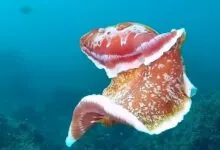Beyond Bald: Owning a Mexican Hairless Dog
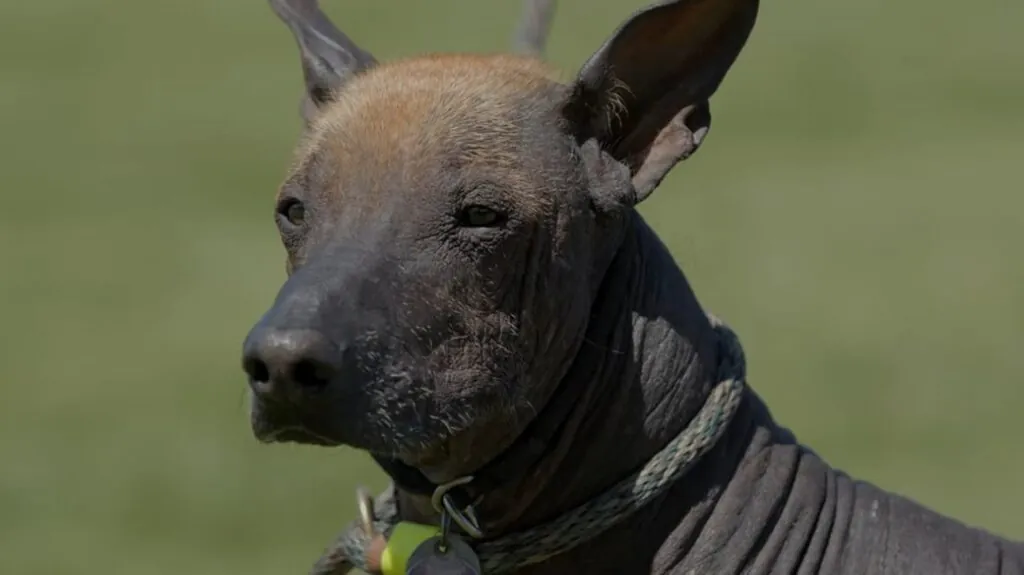
The Mexican hairless dog or xoloitzcuintle, the national dog of Mexico, showcase an enthralling paradox. Its smooth, oftentimes wrinkled skin masks a lineage stretching back millennia, embedded within the fabric of pre-Columbian civilization. The xolo is an anthropological riddle, its gaze mirroring the mysterious whispers of ancient cultures. This piece of construct will let you know about the xoloitzcuintle, from historical significance to its intricate temperament.
| Kingdom | Phylum | Class | Order | Family | Genus | Scientific Name | ||
| Animalia | Chordata | Mammalia | Carnivora | Canidae | Canis | Canis lupus |
Origin and Evolution
The Mexican hairless dog, Xoloitzcuintle in Nahuatl, has an origin story dating back to the mists of pre-Columbian America. Speaking of xolo origin, archaeological evidence propose their presence alongside humans at least 3,500 years back in time.
Evolutionary History
Their unparalleled hairless appearance is accredited to a natural mutation in the foxl3 gene, impacting hair follicle development. The very “nakedness” feasibility arose spontaneously and was perpetuated though selective breeding by pre-Columbian cultures – chiefly for its thermoregulatory perks in warm climates.
Concerning the xolo evolution, current genetic studies suggest that xolos branched off the Eurasian wolf lineage around 10,000 years ago, followed by a separate split from other pre-Columbian American dogs approximately 4,000 years back. This was the isolation that led to a distinct signature!
Genetic Composition and Diversity
Dissimilar to the rest of hairless breeds, xolos don’t possess the shivering mechanism. In addition their skin features unparalleled properties, identical to human skin in tis susceptibility to sunburn and acne. Strikingly, studies suggest a link between the hairless gene and dental anomalies, with these dogs featuring a higher prevalence of missing teeth contrary to coated dogs.
Environmental Adaptations
In terms of the xolo adaptations, the hairless trait, possibly functions practical purposes in pre-Columbian societies. At night, their warm bodies offered natural warmth; skin devoid of fur facilitated pest control and provided thermoregulation advantages in hot climates – a weighty adaptation for life in Mesoamerica.
Distribution and Population
Geographic Range
Contemporarily, xoloitzcuintles inhabit borders of Mexico, with pockets of enthusiasts spread across North America and Europe. Their key range includes central and southern Mexico, reflecting the heartland of pre-Columbian civilizations like the Aztecs and Mayans.
Population Dynamics
The xoloitzcuintle population estimates remain elusive; nevertheless, some reports suggest global populations numbering betwixt 30,000 and 50,000 individuals, while others fetch concerning estimates as low as 10,000. The factor responsible for these discrepancies is the existence of both hairless and coated varieties of xolos within the breed.
Mexican Hairless Dog Varieties
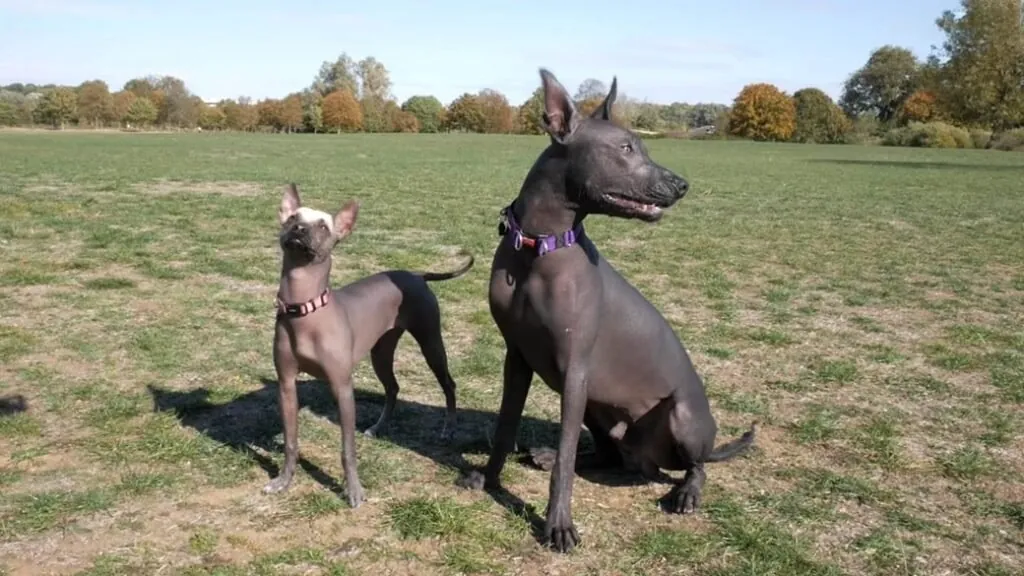
The xoloitzcuintle comes in an awe-inspiring array of varieties, each featuring its own unparalleled charm and quirks.
Size
Coat
Geography
| Continent(s) | North America |
| Countries | Primarily Mexico, also found in Central America and the southwestern United States |
| Bio-geographical Realms | Nearctic |
| Biome | Tropical dry forest, subtropical dry forest |
| Climate Zones | Tropical, subtropical |
Habitat
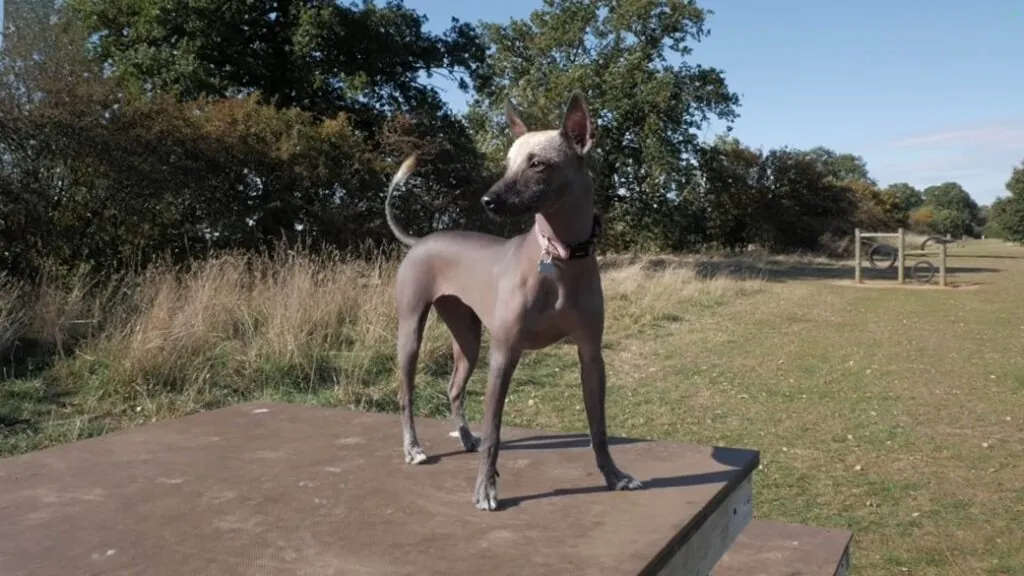
Habitat Preferences
In conjunction with the xoloitzcuintle habitat, the history of these dogs in hot, arid regions of Mesoamerica has imprinted a crystal clear preference for warm climates. It’s their lack of fur that makes them susceptible to cold temperatures, with an ability to shiver for warmth like most mammals. Therefore, xolo habitats fall within temperate to subtropical zones, where daytime highs regularly reach above 70°F (21°C).
Habitat Utilization Patterns
Though the xolo’s ancestral past likely encompassed roaming and hunting small prey, contemporarily, domesticated counterparts chiefly utilize their habitat for exercise, play and socialization. Leash-controlled walks in safe outdoor environments let them explore, sniff and engage in moderate physical activity. Commit to memory, their lack of fur means extra sun protection is pivotal during midday walks, exclusively in regions with high UV indexes.
5 Xoloitzcuintli Facts
Appearance
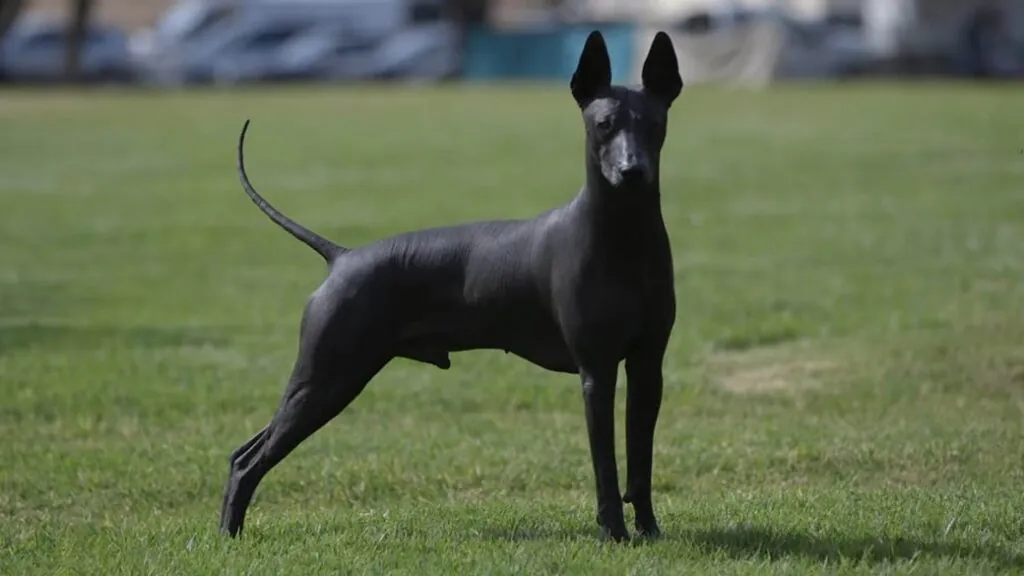
Physical Characteristics
Sexual Dimorphism
Male xolos tend to be slightly larger and more muscular than females, with broader heads and chests. In addition, males my showcase more prominent scrotal skin folds, while females may have two nipples on each side of their chest.
Anatomy
| Color(s) | Black, brindle, fawn, grey, red, white, or combinations of these |
| Tongue | Pink or black |
| Claws | Black or white |
| Mouth | Black or pink lips and gums |
| Jaw | Strong and well-developed |
| Teeth | 42 permanent teeth |
| Nose | Black, liver (brown), or pink |
| Feet | Black, white, or pink pads |
Reproduction and Life Cycles
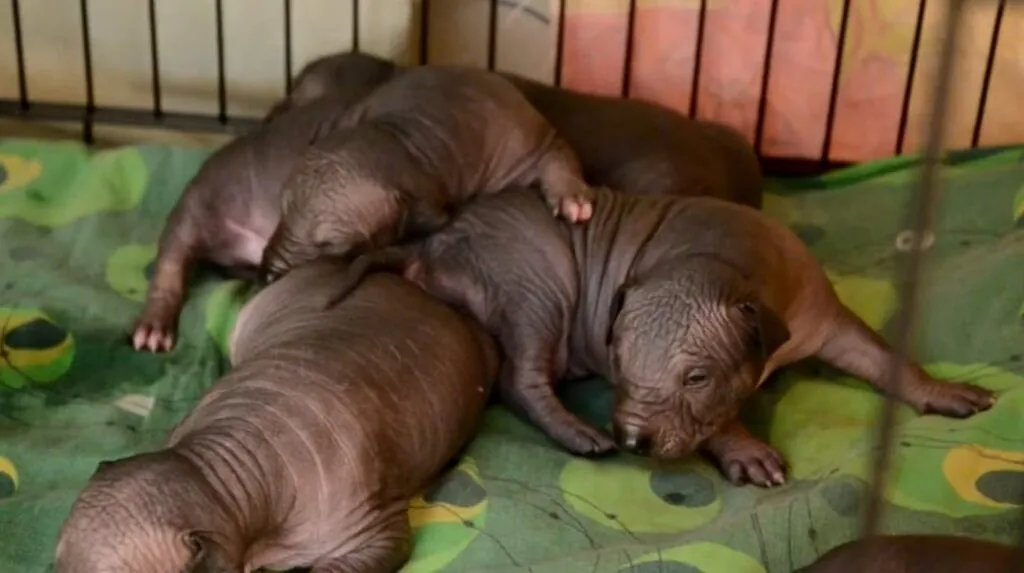
Mating System
With respect to the xolo mating system, they embrace both monogamy and polygamous strategies. While some pairs construct strong, monogamous bonds, other may engage in polyandry. Concerning the xolo breading season, unlike most dog breeds, that cycle over the span of the year, these species normally breed in warmer months, with peaks occurring between spring and early fall.
Reproductive Biology
Both male and female xolos participate in pup rearing, providing warmth, nourishment and protection. Mothers generally nurse their pups, while fathers contribute through vigilant guarding and affectionate interactions.
Gestation Period
Comparable to other dog breeds, they typical gestation period for a xolo female is around 63 days. The xolo breeders closely monitor the pregnancy, offering necessary veterinary support and ensuring a healthy birthing environment.
Life Cycle Stages
Speaking of the Mexican hairless dog lifespan, they can live for 12 to 15 years, with some exceeding 20 years if nourished with proper care.
Mating Habits
| Mating Behavior | Not seasonally restricted, can breed year-round |
| Reproduction Season | Any time of year |
| Litter Size | 1-3 puppies, though litters up to 6 have been reported |
| Gestation Period | 60-63 days |
| Baby Carrying | Carried and nursed by the mother until weaned |
| Independent Age | Around 8-12 weeks, similar to other dog breeds |
| Female Name | Xolotlita, Xola, Aloh, Chula |
| Male Name | Xolo, Xolote, Xolotl, Xoloc |
| Baby Name | Xolotzin, Cachorro Xolo, Chichihualtepetl |
Diet and Lifestyle
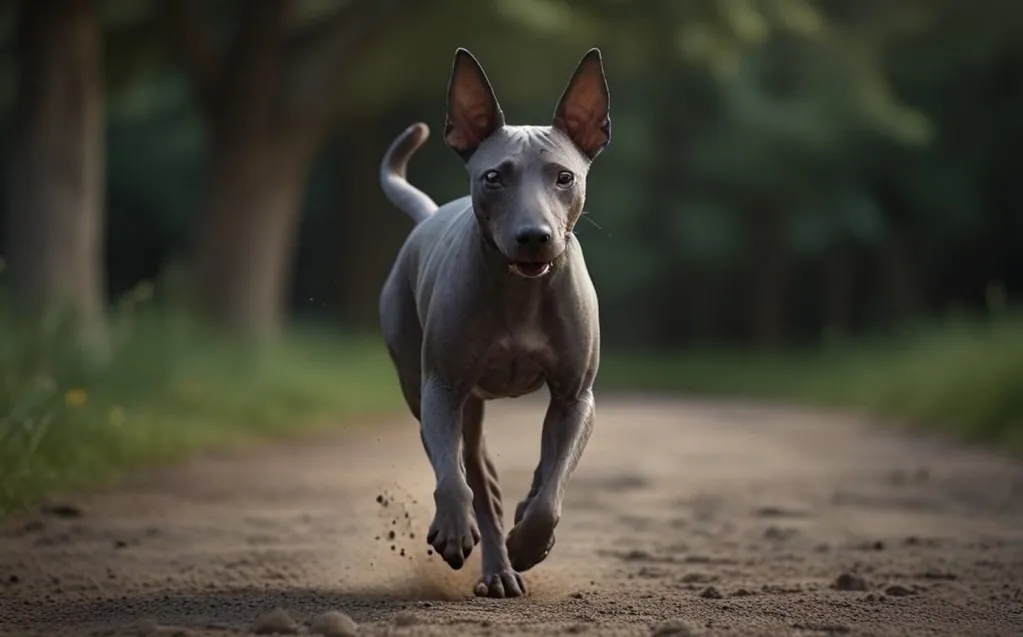
Feeding Ecology
Notwithstanding the fact that xolo’s ancestors likely partake in hunting small prey, modern xolos transitioned to a chiefly secondary consumer role; the xolo diet contemporarily comprises commercially prepared dog food or human-provided meals.
Diurnal Activity Patterns
Divergent from some dog breeds, xolos are primarily diurnal. Their lack of fur makes them susceptible to cold temperatures.
Social Structure
Contrary to the typical pack mentality observed in wolves or other dog breeds, they’ve established strong bonds with humans, becoming zealous companions and cherished members of the family.
Conservation Status
In conjunction with the xoloitzcuintli conservation status, it’s not currently considered endangered or threatened on a global scale; however, their population numbers are comparatively low and they encounter some conservation challenges.
Relationship with Humans
Cultural Significance and Symbolism
For Aztecs and Mayans – pre-Columbian – the xolo was a spiritual conduit, a protector and an icon imbued with powerful meaning. Ancient mythology portrays xolos as companions to deities, assisting souls through the underworld and guarding sacred spaces.
Media and Entertainment
The enchantment of the xoloitzcuintli has permeated a plethora of artistic mediums, inspiring both fictional creatures and documentaries, unfolding their striking real-life realities. Let’s have some examples from different genres: “Frida” (2002), “Isle of Dogs” (2018) and “The Girl with the Louding Voice” by Abi Daré.
Mexican Hairless Dog as a Pet
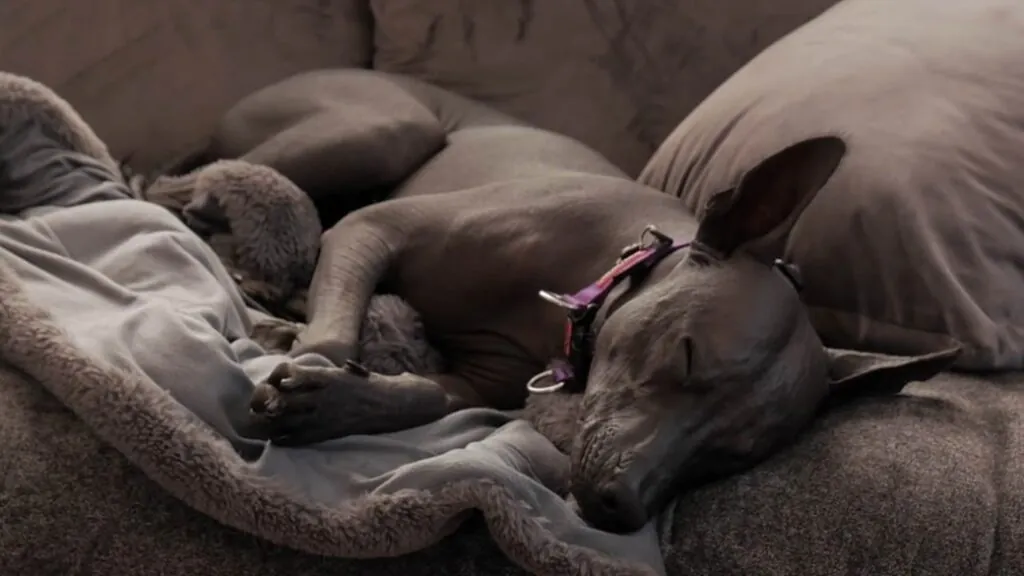
Pet Profile Overview
Size
Shedability
Trainability
Energy Level
General Health
Tendency to Chew
Family & Kid Friendliness
Barking
Moderate
Dog Group
Non-sporting
Male Weight
10-55 lbs
Female Weight
10-55 lbs
Hypoallergenic
Yes
Exercise Needs
Moderate
Bred Cost to Own
Min. $700
Separation Anxiety
High
Preferred Temperature
Warm Climate
Friendly with Other Dogs
Moderate
When it comes to xolo adoption, you’re to be committed on the part of a plethora of essentials. Let’s dig deep into what you to ponder over.
Temperament
The xolo, having an all-round friendly personality, is affectionate with family, highly intelligent and sensitive in nature. They consider all members of the family as a friend, including other dogs. Thanks to their wariness of strangers and protective nature, they make good watchdogs. On the related note, got the scoop of the Shih Tzu – my favorite pet.
Common Health Issues
In conjunction with the xoloitzcuintli health issues, they suffer from dry skin, some drug sensitivities, cancer and joint issues. Before xolo adoption, you’re to look out for kennel cough – an infectious disease that produces a very harsh coughing sound.
Care
Concerning the Mexican hairless dog care, the dog breed can adapt to a plethora of different living situations and daily schedules and owners will not need to spend too much time on grooming and care.
Grooming
As for as the xolo grooming is concerned, the coated variety entails minimum brushing, likely no more than once a week. You can just wipe down the hairless variety with a damp cloth and bathed with a light moisturizer; remember, bathing too often may end up in stripping the natural oils from the skin.
The xolo owner must also check their ears regularly for signs of infection; to clean them use a cotton swab. About twice a month, the nails should be trimmed to prevent them from annoying to deal with.
Exercise
In terms of the xolo exercise timespan, they need a moderate amount of exercise, around 45 minutes daily. The breed enjoys long walks around the block, fetching and dynamic playtime.
Training
This extremely trainable breed is eager to learn and are good at acting upon instructions. You’re to use positive reinforcement methods for these are sensitive dogs and respond very poorly to harsh actions.
Xoloitzcuintli Food
To maintain proper food portioning, you’re to ponder over the xolo’s size and activity level. Furthermore, look for the dog food with a little extra TLC and ample, natural nutrition to meet their skin needs and prevent dry skin and to keep cancers and joint issues at bay.
The Takeaways
Forge a path through an intriguing journey as we unfold fascinating facts about Mexican hairless dogs – truly captivating animals that start with M. Join us in shedding light on their remarkable rundown!
| Common Name | Xoloitzcuintli |
| Other Name(s) | Mexican Hairless Dog, Xolo, Cholo |
| Number of Species | Single breed, with three varieties based on size: Toy, Miniature, Standard |
| Population Size | Estimated around 30,000 worldwide |
| Lifespan | 12-15 years |
| Weight | Toy (4-6 lbs), Miniature (8-11 lbs), Standard (13-50 lbs) |
| Length | Toy (10-14 inches), Miniature (14-16 inches), Standard (16-20 inches) |
| Top Speed | 25-30 mph |
| Predator | Coyotes, raptors, larger dogs in some situations |
| Prey | Small rodents, lizards, insects (hairless varieties not well-equipped for hunting) |
| Most Distinctive Feature | Hairless coat (can also have short, fine hair), with smooth or wrinkled skin |
FAQs




